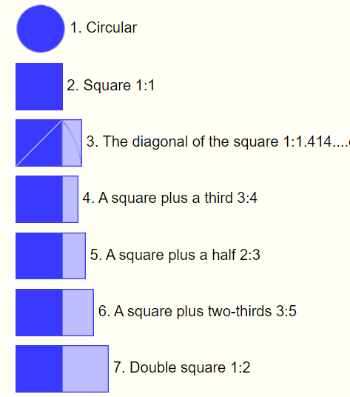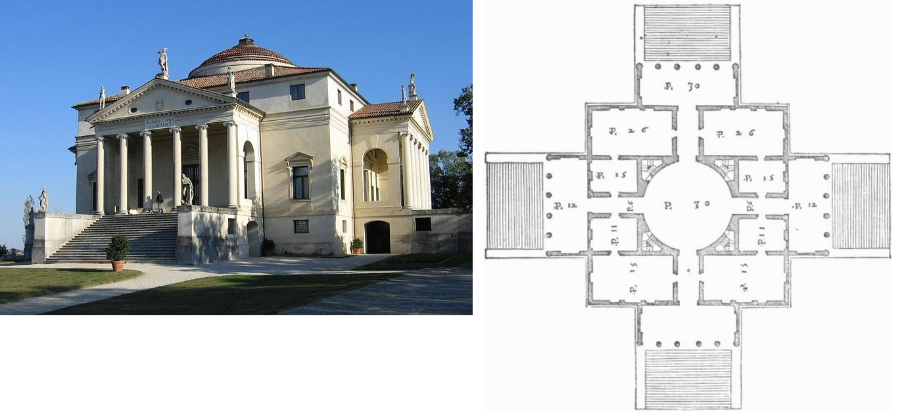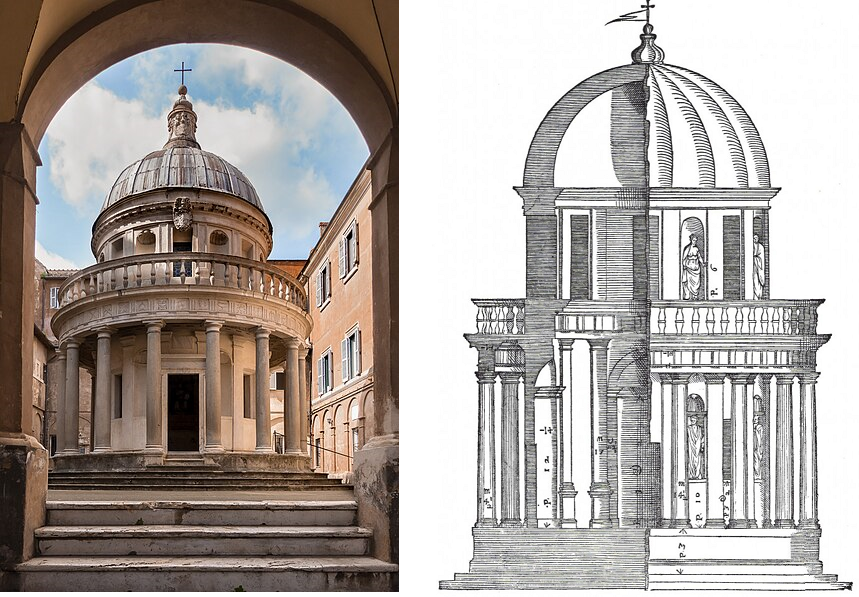De Architectura, the monumental work of the Roman architect Vitruvius (27 BC), was the inspiration for Renaissance architects as Alberti, Bramante, Michelangelo and Palladio. [br]Alberti (1407-1472) saw beauty as “[i]a rational order and fusion of the proportions of all parts of a building, so that every part has its own fixed form and size and nothing can be added or taken away without a distortion of the whole[/i]”. [br]He also wrote "[i]Therefore we will derive all of proportion rules from the musicians, who are the greatest masters at numbers ant proportions in which nature itself exhibits itself in its most excellent and complete way.[/i]"[br]This agrees with Ann Bulckens who saw the mean proportion 3 : 2 in 9 : 6 :: 6 : 4 as the key proportion of the Parthenon.
In his "[url=https://en.wikipedia.org/wiki/I_quattro_libri_dell%27architettura]I quattro libri dell'architettura[/url]" (the four books on architecture - 1570) Palladio suggests 7 harmonic proportions. Except the diagonal of the square ([math]\sqrt{2}[/math]), you can find all these proportions in terug in de [url=https://en.wikipedia.org/wiki/Pythagorean_tuning]Pythagorean tonal system[/url].

bron: http://www.aboutscotland.com/harmony/prop3.html
An iconic example of renaissance architecture is the Villa Rotonda (1570) by Palladio.[br]Plan and facade of this villa in Vicenza are based on circle and square.
Another iconic renaissance building is the Tempietto (1510) by Bramante.[br]Bramante based the desing upon Roman temples and Vitruvius, although not fully the 100%.[br]So also in this tempietto you will find classic proportions.[br]The column in it should be as high as the width of the cella, and the distance between the edge of the stylobate and the wall of the cella should be one fifth of the diameter of the stylobate, but in this Bramante didn'r stick to the rules. Although other proportions are perfect, as usual in renaissance buildings. The width of the peristylium or the colonnade (9 meter) equals the height of the middle cilinder (cella and drum). The distance between the columns, measured between the axes, is 4 times as big as the diameter of each columns, and the distance to the wall measures twice the diameter (source: [url=https://en.wikipedia.org/wiki/Tempietto_del_Bramante]Wikipedia[/url]).[br]Of course in this building too you can draw so many lines that it's not difficult to find somewhere a golden rectangle but this surpasses completely the conceptual thining of renaissance architects.



